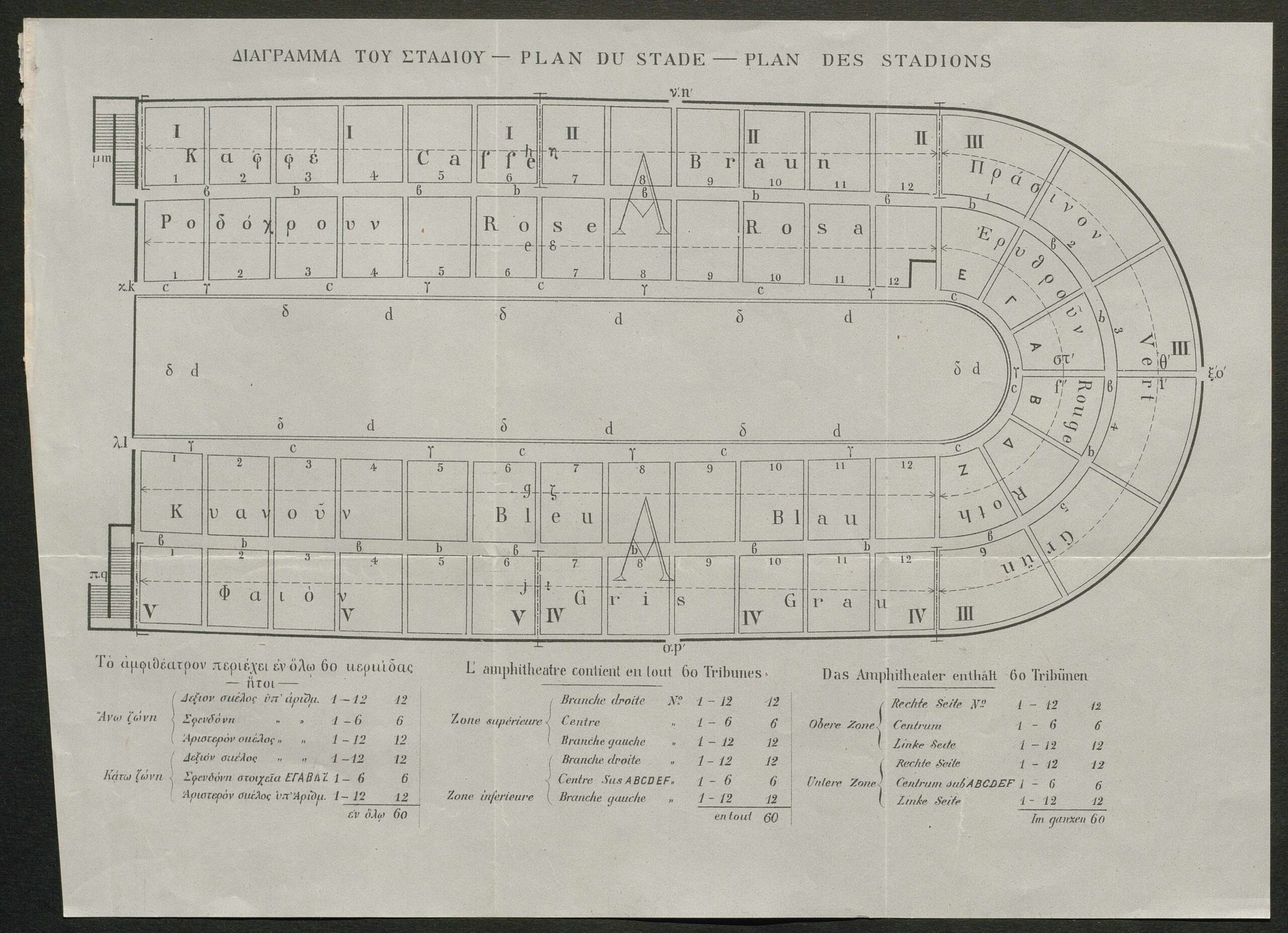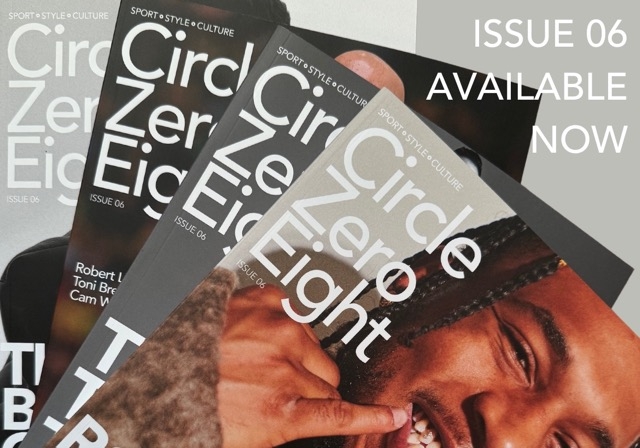
Programme in Greek and French for the opening day of the 1896 Olympic Games in Athens. The programme lists two dates for the opening day – the Greek text, in line with the Julian calendar used in Greece at the time, lists the date as March 25th, and the French follows the Gregorian calendar and lists April 6th.

Postcard sent from Patras, near Athens, by gymnast Louis Zutter. Zutter was one of two Swiss athletes to travel to the 1896 Olympics, where he won one gold and two silver medals.

Photograph of the Panathenaic Stadium in Athens. The stadium was originally built around 330 BC and was refurbished in the 1890s to host the 1896 Olympic Games. On April 10th, 1896, a delirious crowd watched Greek runner Spyridon Louis enter the stadium and cross the finish line to win the first Olympic marathon.

Plan of the Panathenaic Stadium in Greek, French and German, showing the different stands. The stadium is built almost entirely of Pentelic marble and can hold approximately 80,000 spectators.

Plan showing the Panathenaic Stadium and the surrounding area. The hill and stadium are the site of the lighting of the Olympic flame before every edition of the Games.
In all of sporting history, few events resonate with the same significance as the 1896 Olympic Games. Held against the backdrop of a resurgent Greece and a world in the throes of transition, these Games marked not only the revival of ancient athletic traditions but also the birth of a modern institution that would transcend borders, ideologies, and generations.

Programme in Greek and French for the opening day of the 1896 Olympic Games in Athens. The programme lists two dates for the opening day – the Greek text, in line with the Julian calendar used in Greece at the time, lists the date as March 25th, and the French follows the Gregorian calendar and lists April 6th.
The significance of the 1896 Olympics lies not only in the athletic feats achieved at the Panathenaic Stadium, but in the spirit of unity and cooperation that pervaded the event. Representing 14 nations, competitors embraced the ideals of fair play and sportsmanship, transcending political differences and linguistic barriers in pursuit of a common goal.

Postcard sent from Patras, near Athens, by gymnast Louis Zutter. Zutter was one of two Swiss athletes to travel to the 1896 Olympics, where he won one gold and two silver medals.
At its core, the 1896 Olympics embodied the vision of Baron Pierre de Coubertin, a French educator whose fervent belief in the power of sport to foster peace and understanding propelled the modern Olympic movement into existence. In Athens, his vision found tangible expression as athletes, spectators, and dignitaries alike came together in a shared celebration of humanity’s physical and spiritual potential.

Photograph of the Panathenaic Stadium in Athens. The stadium was originally built around 330 BC and was refurbished in the 1890s to host the 1896 Olympic Games. On April 10th, 1896, a delirious crowd watched Greek runner Spyridon Louis enter the stadium and cross the finish line to win the first Olympic marathon.
Today, as we commemorate the 128th anniversary of the 1896 Games, and celebrate the Olympic Games Paris 2024, it’s an opportunity to reflect not only on their historical significance, but also on the enduring values they espouse. Working with The Olympic Museum, based in Lausanne, Switzerland, we delve into their incredible archive with an exploration of the remarkable history of the 1896 Games.

Plan of the Panathenaic Stadium in Greek, French and German, showing the different stands. The stadium is built almost entirely of Pentelic marble and can hold approximately 80,000 spectators.

Plan showing the Panathenaic Stadium and the surrounding area. The hill and stadium are the site of the lighting of the Olympic flame before every edition of the Games.






